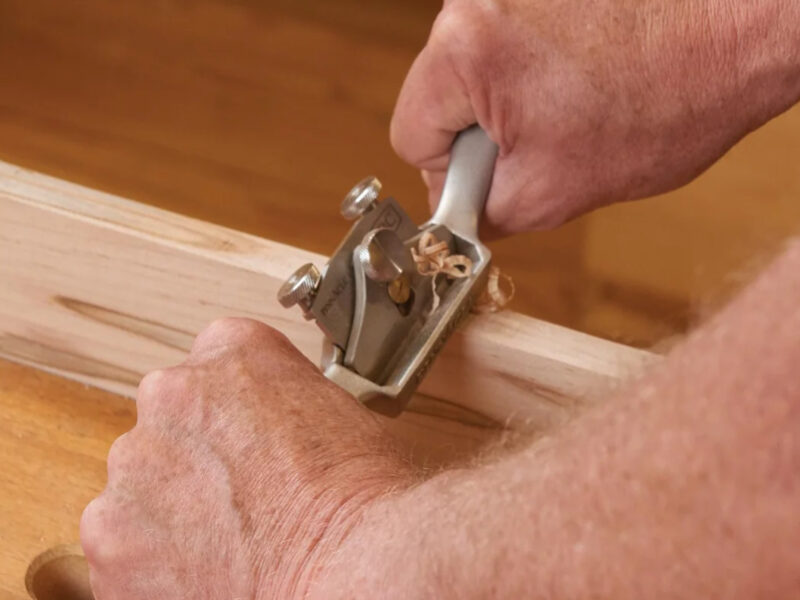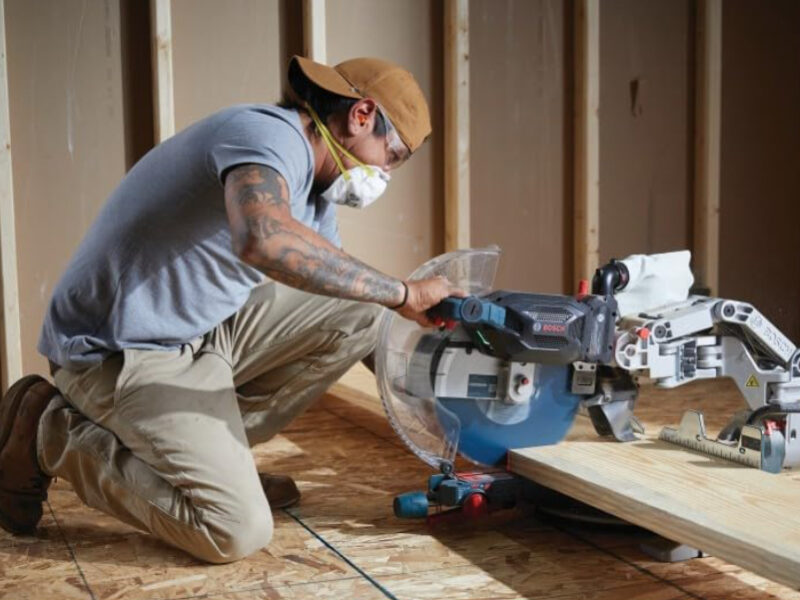Flex Power Tools is a German brand renowned for high-performance power tools aimed at professional craftsmen and contractors. The big question for many prospective tool buyers will be how they stack up against established rivals like DeWalt, Milwaukee, Bosch, and Makita.
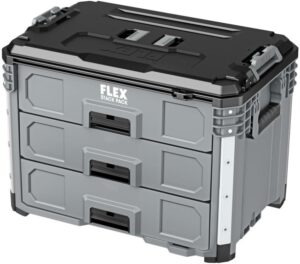 Although Flex will be a new name for many they’ve been around since 1924. They claim to have developed the world’s first angle grinder back in 1954. Although they are now owned by the giant Chervon consortium they are still headquartered in Germany, and much of the manufacturing is still there.
Although Flex will be a new name for many they’ve been around since 1924. They claim to have developed the world’s first angle grinder back in 1954. Although they are now owned by the giant Chervon consortium they are still headquartered in Germany, and much of the manufacturing is still there.
Flex offers a wide range of power tools in all the common categories used by construction and remodeling trades. There are drills and drivers, saws, nailers, sanders, grinders, multi-tools, etc. There’s also storage, lighting, and accessories. The choice isn’t currently as extensive as brands like DeWalt or Milwaukee, but whatever job you need to do I’m pretty sure you’ll find a Flex power tool that can do it.
Flex Power Tools Focus on Performance
Flex is keen to point out the power advantage you get with their latest range of tools which is based around their 24V lithium battery platform. Flex says it delivers “power that’s up to 200% higher than anything you’ve experienced.” I’m not sure where they get that figure from, but it is significantly more output than its main rivals.
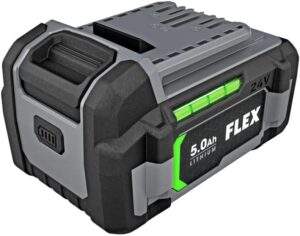 Power IQ is designed to deliver more of the power available from each cell, and Therma-Tech cooling prevents them from overheating. They go big on the numbers again saying that all this high-tech results in 300% longer battery life, and 100% faster charging. They also wrap all the delicate bits up in epoxy resin so the batteries should survive the inevitable knocks and drops. All Flex 24V power tools use brushless motors so you’re also getting reliability and durability (we talk about brush versus brushless motors here).
Power IQ is designed to deliver more of the power available from each cell, and Therma-Tech cooling prevents them from overheating. They go big on the numbers again saying that all this high-tech results in 300% longer battery life, and 100% faster charging. They also wrap all the delicate bits up in epoxy resin so the batteries should survive the inevitable knocks and drops. All Flex 24V power tools use brushless motors so you’re also getting reliability and durability (we talk about brush versus brushless motors here).
Key FLEX Features
- Powerful and Durable: Flex power tools are making a determined effort to pitch themselves against the best of the other power tool brands. They’re aiming at professional users and DIY enthusiasts who are happy to invest a bit more to get quality and reliability. I always think a good way to check customer satisfaction is via feedback on the top retailer websites. There aren’t so many reviews of Flex power tools because they aren’t so well known in the US, but they consistently get 5 stars right across the product range.
- Innovative Technology: All power tool manufacturers claim to incorporate the latest advancements in technology but with the Flex 24V system we can actually see proof. I’ll be watching with interest to see how they develop.
- Ergonomic Design: There aren’t any real surprises here as modern power tools all look pretty similar whoever you get them from. Flex have obviously paid attention to ergonomics, so I would expect the tools to be comfortable to use for long periods.
Head-to-Head Comparison
Time to put Flex tools claims to the test to see how they stack up. I’m going to use 20V cordless drill drivers for this because they’re probably the most popular power tool out there. I’m going to look at key specifications, and prices for Flex, DeWalt, and Milwaukee.
Flex 24V Drill/Driver + 2 batteries, charger, and carry bag
-
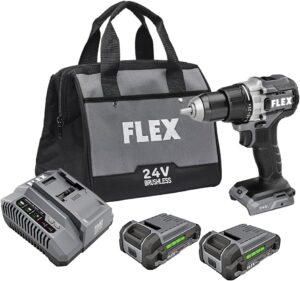 Batteries: 2 x 24V, 2.5Ah
Batteries: 2 x 24V, 2.5Ah- Chuck: 1/2”
- Speed Ranges: 2 – 0-600 & 0-2,200 rpm
- Clutch Settings: 22
- Maximum Torque: 750 in-lbs
- Tool Dimensions: 6.9″ front to back x 4″ wide x 10″ tall
- Tool Weight (without battery): 3.2 pounds
- Price: $179.00 at Amazon
DeWalt 20V MAX XR Drill/Driver + 2 batteries, charger, and carry bag
-
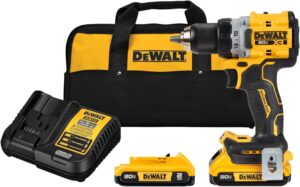 Batteries: 2 x 20V, 2.0Ah
Batteries: 2 x 20V, 2.0Ah- Chuck: 1/2”
- Speed Ranges: 2 – 0-650 & 0-2,000 rpm
- Clutch Settings: 15
- Maximum Torque: 796 in-lbs
- Tool Dimensions: 6.37″ front to back x 3″ wide x 8.14″ tall
- Tool Weight (without battery): 2 pounds 13 ounces
- Price: $169.00 at Amazon
Milwaukee M18 Fuel Drill/Driver + 2 batteries, charger, and hard case
-
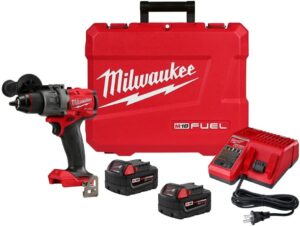 Batteries: 2 x 18V, 5Ah
Batteries: 2 x 18V, 5Ah- Chuck: 1/2”
- Speed Ranges: 2 – 0-550 & 0-2,000 rpm
- Clutch Settings: 14
- Maximum Torque: 1,200 in-lbs
- Tool Dimensions: 6.9″ front to back x 2.1″ wide x 8.66″ tall
- Tool Weight (without battery): 3.2 pounds
- Price: $265.00 at Amazon
Conclusions
Each of these tools is from a trusted brand with a reputation for quality, reliability, and durability. I doubt you’d be disappointed with any of them. They each have highly efficient brushless motors. They each have ½” keyless chucks.
We’ve already mentioned the 24V advantage that Flex tools offer. It’s not a major power bump like going to 40V, for example, but if a 24V tool is drilling the same hole as a 20V or 18V tool then the first is doing the job with less effort. That means there’s less strain on the motor so in theory it should last longer.
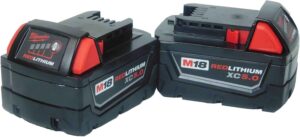 The Amp hours (Ah) of the battery is also worth considering. It’s like putting gas in your tank – the higher the Ah the longer the battery will maintain performance. Milwaukee is way out front here but the performance of those batteries is reflected in the price.
The Amp hours (Ah) of the battery is also worth considering. It’s like putting gas in your tank – the higher the Ah the longer the battery will maintain performance. Milwaukee is way out front here but the performance of those batteries is reflected in the price.
Speed ranges are all pretty similar, and clutch settings aren’t too important unless you do a lot of delicate work – and in that case you’d probably buy a 12V drill driver, not one of these beasts. Torque can be a big deal if you drive a lot of long screws, and although the Flex and DeWalt are impressive it’s the Milwaukee that comes out top again.
Lastly, we come to size and weight. They’re all pretty compact though the Flex is taller. Front-to-back dimension can be important when you’re drilling or driving in tight corners, and the DeWalt is a good ½” shorter than the other two. Weights are close enough to make no difference. Oh, I almost forgot. They all have LED lights but I particularly like the one on the DeWalt that is adjustable for angle.
So the Milwaukee wins on absolute power but you’re going to pay close to a hundred bucks more for it. The Flex and DeWalt provide more than adequate performance for most people, and are difficult to split. Would I pay ten bucks extra for the greater battery power? If I was a contractor using a drill driver all day long that edge could make a difference in getting the job done quicker – and time is money.
For DIY buyers I’m not sure there’s really much in it. I might be tempted by the Flex’s German engineering. I’ve asked Flex if they fancy letting me have one for a full test. I’ll let you know how that turns out.
A couple of other Flex power tools you might want to take a look at:
 The Flex Jigsaw is another powerful 24V tool with a high-efficiency brushless motor. It has 4 speeds plus an auto setting that adjusts to the material being cut. Blade changing is a push-button job. Double rollers keep the blade running true for better accuracy. The Flex Jigsaw as a bare tool is currently $149.00 at Amazon.
The Flex Jigsaw is another powerful 24V tool with a high-efficiency brushless motor. It has 4 speeds plus an auto setting that adjusts to the material being cut. Blade changing is a push-button job. Double rollers keep the blade running true for better accuracy. The Flex Jigsaw as a bare tool is currently $149.00 at Amazon.
 The low-profile Flex 5-Inch Random Orbital Sander follows the same power pattern: 24V battery and brushless motor. Flex claims it has low vibration, which is nice if you use one a lot, but the headline feature for me is the turbo-mode. This ramps up the speed to a class-leading 13,000 OPM (oscillations per minute) when you want super-fast material removal. There are 3 other speeds when you’re not in such a hurry! The Flex Sander as a bare tool is also $149.00 at Amazon.
The low-profile Flex 5-Inch Random Orbital Sander follows the same power pattern: 24V battery and brushless motor. Flex claims it has low vibration, which is nice if you use one a lot, but the headline feature for me is the turbo-mode. This ramps up the speed to a class-leading 13,000 OPM (oscillations per minute) when you want super-fast material removal. There are 3 other speeds when you’re not in such a hurry! The Flex Sander as a bare tool is also $149.00 at Amazon.
Specifications checked at the relevant manufacturer’s website.

